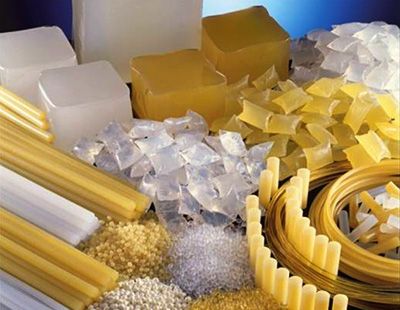🧩 Hot Melt Adhesive: Appearance & Format
- Introduction
Hot melt adhesives (HMAs) are solid at room temperature and become liquid when heated. Their appearance and format vary depending on application needs and industry standards.
- Common Formats
|
Format Type |
Description |
Typical Use Cases |
|
🔘 Pellets/Granules |
Small, bead-like pieces |
Industrial bulk melting systems |
|
🧊 Blocks/Bricks |
Solid rectangular shapes |
Large-scale manufacturing |
|
🟨 Sticks/Rods |
Cylindrical sticks (e.g., 7mm or 11mm diameter) |
Manual glue guns for crafts or DIY |
|
🧵 Films/Sheets |
Thin adhesive layers |
Laminating, textiles, electronics |
|
🧃 Cartridges |
Pre-filled tubes or containers |
Precision dispensing in assembly lines |
- Appearance Characteristics
- Color: Typically translucent white, amber, or clear. Some are dyed for identification.
- Texture: Smooth and waxy when solid; viscous and tacky when melted.
- Finish: Glossy or matte depending on formulation and additives.
Here’s a visual reference to help illustrate the different types and appearances:
- Selection Considerations
- Choose format based on:
- Application method (manual vs automated)
- Volume of use
- Substrate compatibility
- Required precision
- Conclusion
Understanding the appearance and format of hot melt adhesives helps ensure proper selection and efficient application across industries—from packaging to electronics to textiles.
